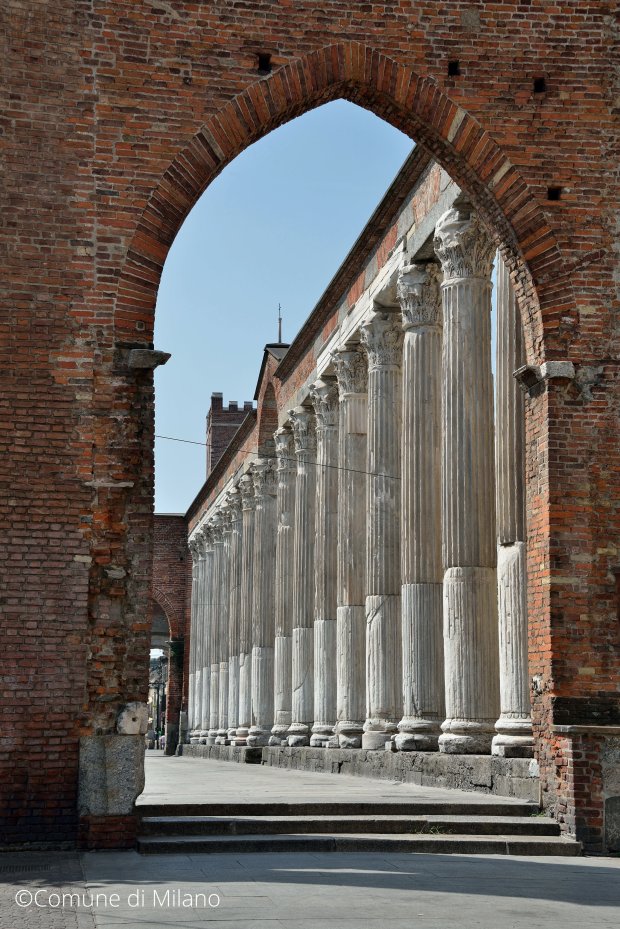Milan: a Second Rome

Few visitors to the city actually know that Milan has a very significant role in Roman history: so much so that, from 286 to 402 AD, it was the Capital of the western half of the Roman Empire.
Milan is no doubt Italy’s most contemporary and innovative city, and its skyline is dotted with new, gleaming skyscrapers, much against the country’s grain. The city has always been linked to modernity in the Italian imagination and frequently set against the quintessentially traditional and static Rome, the unrivalled seat of art, history and religion. In a time such as this, when all cities must look deep into their own soul in order to find new strength and drive for a future rebirth, Milano can well rediscover its long-standing kinship with the eternal city.
Few visitors to the city actually know that Milan has a very significant role in Roman history: so much so that, from 286 to 402 AD, it was the Capital of the western half of the Roman Empire. Emperors used to enter the city on chariots and celebrate their triumphs surrounded by beautiful, long-lost buildings whose foundations are encountered every time, for whichever reason, there is a need to dig under the city centre, as for the ongoing work on the Metro’s upcoming “blue” line.
Romans knew when to choose a city for their ends. Since its very beginnings Milan, a former Celtic village, was valued because of its position, which made it an ideal commercial outpost towards and beyond all sides of the great north Italian plain. It has often been argued that the Latin name Mediolanum, from which the modern one derives, originally meant, “place in the middle”. Since the Romans made it their own around 200 BC, the city has never stopped being at the centre of things, becoming in time, through so many centuries, the region’s and then the country’s commercial and financial hub. Its centrality and connectedness are now evident in its three normally very busy airports.
It is always pleasant to indulge in the city’s distant past, as it is right there that the roots of its present standing are to be found. While mostly hidden by the subsequent transformations of the city, the Roman traces are still there, as in the Corinthian columns in front of the San Lorenzo Basilica, in what is now a noisy nightlife area. Or in the fully conserved tower, once a part of the magnificent Roman Circus or hippodrome, and now the Church of San Maurizio’s clock tower. A comprehensive view of what once was, before the buildings’ stone and marble ended up elsewhere, can be gained from a visit to the fascinating Museo Archeologico, which houses several extremely interesting exhibits, bringing the ancient city back to life.
Many traces of Roman times can also be found in the ancient basilicas and churches, which were originally built during the Empire’s very last stand. It was in Milan, in AD 313 that the Emperor Constantine I proclaimed religious tolerance in his celebrated Edict, allowing Christians freedom of worship for the first time. A few decades later, a Roman official born in Germany, Aurelius Ambrosius, was to become in time the city’s Bishop, one of the western Church’s most important personalities and Milan’s Patron Saint, Ambrose.
Milan had its own Colosseum as well, only slightly smaller than Rome’s and in use until the end of the fourth century. Its memory was lost in time, as its materials were reused on other sites, including the nearby San Lorenzo. Only small fragments remain, but the foundations have been dug up to reveal its original perimeter. In homage to its ancient glory and in keeping with its post-pandemic green and sustainable vocation, the city has decided to turn the whole area into a park, Amphiteatrum Naturae. Plant and trees of Roman significance, such as box, privet, myrtle and cypress, will trace the arena’s original blueprint and suggest its original walls and structures. 105 trees and 1700 square metres of hedges will make Milan greener and further embellish it, just as they will point back to its majestic heritage. People will be able to walk and rest where once gladiators fought and lions were on show. And a good drink will be just around the corner, in one of the many cafes and bars of the bustling Colonne area.


